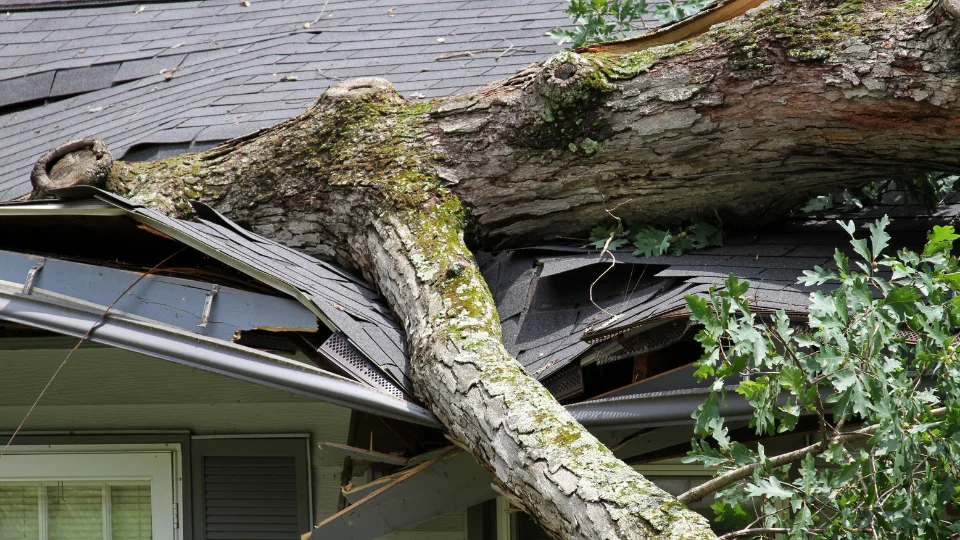If you’re a homeowner, you’ve probably wondered at some point: “How often will insurance pay for a new roof?” It’s a common question, especially when your roof starts showing signs of wear or after a storm passes through. In this article, we’ll dive into how the insurance process works and what factors influence whether or not you’re covered.
Read on to learn more!
Factors That Affect Insurance Coverage for Roof Replacement
When it comes to roof replacement, several factors can impact whether your insurance will foot the bill. Key elements include the age of your roof, the type of damage it has sustained, and, of course, the details of your insurance policy.
Age of the Roof
How old is your roof? This question matters a lot when it comes to insurance. Many insurance companies have guidelines on how old a roof can be before they reduce or deny coverage. For instance, if your roof is more than 20 years old, the likelihood of full coverage drops significantly. That’s because older roofs are more likely to suffer from normal wear and tear, which insurance companies typically don’t cover.
Most insurance policies take into account the typical lifespan of your roof. Asphalt shingles, for example, usually last around 20 years, while materials like metal or tile can last much longer.
Insurance companies often adjust how much they’re willing to pay based on depreciation. This means they may only pay for the current, depreciated value of your old roof, rather than the cost of replacing it entirely.
Type of Damage
The type of damage also plays a major role in whether or not your insurance will cover roof replacement. Typically, insurance covers damage caused by unexpected events like hail or windstorms.
Hailstorms, for example, can dent or crack shingles, while high winds might tear parts of your roof off or leave it exposed to further water damage. Claims related to these events are often approved because they’re sudden and unavoidable.
However, not all damage is covered. If your roof has issues from long-term neglect, like slow leaks or mold growth, you might be out of luck. Insurers expect homeowners to perform regular maintenance—so if you’ve been neglecting things like cleaning gutters or trimming back trees, don’t be surprised if your claim gets denied.
Policy Details
Each insurance policy is different, and the fine print can make all the difference when it comes to roof replacement. Some policies may cover only specific types of damage (like hail or wind), while others may exclude certain types of roofs altogether.
That’s why it’s important to review your homeowner’s insurance policy closely. Does it require you to use specific contractors? Are there any extra procedures you need to follow? Knowing these details in advance can make the claims process go much more smoothly.
Types of Insurance Policies and Roof Coverage
There are two main types of insurance policies that dictate how much reimbursement you’ll receive: Actual Cash Value (ACV) and Replacement Cost Value (RCV). Understanding the difference can help you better prepare for the financial implications of a roof replacement.
Actual Cash Value (ACV) Policy
An Actual Cash Value policy factors in depreciation. This means the older your roof is, the less money you’ll get. For instance, if your roof is 15 years old, the insurance will calculate how much it’s worth right now—subtracting for wear and tear over the years—rather than paying to replace it with a brand-new roof.
This kind of policy often leaves homeowners with higher out-of-pocket costs, especially if their roof is nearing the end of its lifespan.
Replacement Cost Value (RCV) Policy
In contrast, a Replacement Cost Value policy doesn’t factor in depreciation. With RCV coverage, your insurance company will pay to replace your roof with a similar one at today’s market price. While these policies generally come with higher premiums, they offer more comprehensive financial protection by covering the full cost of replacing your roof.
Steps to Claiming Roof Replacement on Insurance
Filing a claim for a roof replacement can feel overwhelming, but following these steps will help simplify the process:
Document the Damage
Start by taking clear photos and videos of the damage. These will serve as crucial evidence when you file your claim. Keep receipts from any temporary repairs and note the date of the damage. If possible, document any severe weather events that may have contributed to the roof’s condition.
File the Claim
Once you’ve documented everything, contact your insurance company and file the claim. Be prepared to provide all necessary details, including the photos and any other evidence you’ve gathered.
Keep copies of all communications and documents related to the claim. Staying organized will help you avoid headaches down the line.
Handle Discrepancies in Estimates
Sometimes, your contractor’s estimate may differ from the one provided by the insurance adjuster. If that happens, don’t panic—just make sure all your evidence is clearly presented. Getting multiple quotes from different contractors can help you find a middle ground if there’s a significant discrepancy.
Conclusion: How Often Will Insurance Pay For A New Roof?
In conclusion, getting your insurance to cover a new roof isn’t always straightforward. Factors like the age of your roof, the type of damage, and your policy specifics all come into play. Understanding these details—and being prepared with proper documentation—can make the process much smoother.
For the best results, work closely with your insurance company, communicate clearly, and consult with professionals like roofers or contractors. By taking proactive steps, you can increase your chances of having your claim approved and minimize the financial burden of a roof replacement. For help with your roof, contact Landmark Roofing today!






